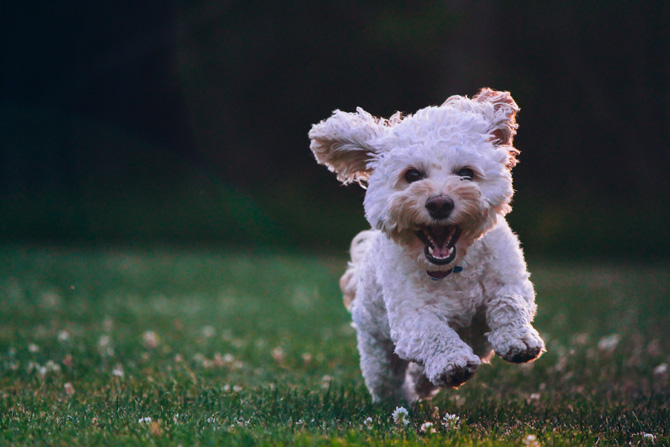According to Oxford Languages, the definition of ‘resilience’ is “the capacity to recover quickly from difficulties; toughness.” It’s a word that’s often used by teachers when describing children. Yet, why is resilience in dogs important?
Well, just like in kids, building their resilience helps them overcome ‘tricky’ situations more easily. This lessens the likelihood of stress or anxiety so, essentially, resilience is good for mental health. It’s the same for our barking buddies too. Building resilience in dogs helps them cope with a variety of situations with ease, making them happier and (mentally) healthier.
Resilience is built on many things
A dog’s level of resilience is dependent on many things. Associated factors include genetics, early socialisation and training, exposure to fearful events and current environment.
Dogs that have low levels of resilience live with fear and anxiety, which can’t be good for their mental or physical health. No loving pet owner wants to see his or her fur pal afraid or feeling on edge. This is why it’s important for pet professionals to discuss resilience in dogs and the reasons why it matters.
The first step in building resilience in dogs is early socialisation, which can be promoted to new pet owners. Encourage owners to train their puppies well, using positive reinforcement techniques or joining a puppy school. Certainly, if you notice a puppy is already experiencing fear or anxiety, this lack of resilience could be genetic. In this case, it may be useful to recommend the services of an animal behaviourist or trainer.
How can we increase resilience in dogs?
In 2016, Dr. Patricia McConnell, a professor of zoology at the University of Wisconsin, USA, hosted a webinar entitled “Building Resilience in Dogs”. She says resilience requires four important factors.
1. Sense of safety and security
Feelings of safety and security come from predictability and calmness. Pet owners, particularly new ones, can be encouraged to create and adhere to a routine with their pets.
Cues can also come in super useful. For example, when I leave the house and I’m going somewhere my dog can’t accompany me I say, “guard the house”. I actually did this unintentionally. However, I now realise it’s a useful cue. It tells my dog that I’m going out and he must stay at home, but also that I will return.
You can also educate pet owners about the importance of having a ‘safety spot’ for their dog. This might be a special, super comfy, chair in the house or the dog’s own bed, which should be located in a peaceful area of the home.
When things get a little hectic, or someone new comes into the home, owners can enforce the use of the ‘safety spot’ to help their pooch feel secure.
2. Social support
Dr McConnell explains that social support is about being there for dogs but not overwhelming them. For example, a dog that’s not into hugs and cuddles probably won’t enjoy their owner giving them snuggles. However, spending some quiet time next to the dog may be appreciated.
If you have a client whose dog really enjoys the company of other dogs, you might suggest giving Fido some off-leash time at the beach or local park.
3. Sense of autonomy
There’s no denying that dogs have very little choice. We humans decide when they eat and when they go on a walk. However, Dr McConnell says it’s important to ‘provide opportunities for a dog to choose what they want to do, when they want to do it.’
She suggests teaching dogs tricks, as this gives them the opportunity to perform, or not—depending on how they are feeling. Pet owners can also be encouraged to teach behaviours that the dog can commence itself. For example, a dog might be taught to squeak a toy when it wants to go out. These are all considered no-force tactics to provide a dog with a greater sense of independence.
4. Healthy and balanced internal physiology
Dogs need to feel physically and mentally fit and well to perform at their best. This requires optimum nutrition and regular exercise. You can raise awareness amongst pet owners of the three main requirements: time outdoors, frequent exercise and mental stimulation.
What strategies do you have for building resilience in dogs?
Latest posts by Liz Walden (see all)
- Pet health: Medicinal cannabis for pets - December 27, 2021
- What pet business insurance do I need? - November 17, 2021
- Pet sitters: how to take time off - November 15, 2021










Leave A Comment